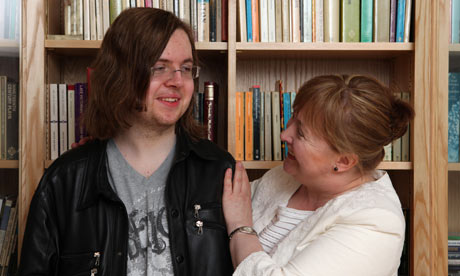I have been a part of this social network since July 2008 and already I have thousands of friends and followers - I think it really shows how eager people are to connect with others around the globe who are sharing a common experience, my experience is with autism. I have a grandson named Zackary who was diagnosed with low functioning autism from a young age. I wanted to use this website to stay connected with my family, my friends, and people who I have met that are affected by autism in their lives.
One day I sent out a question about autism and to my surprise I received a lot of replies, which I really appreciated! I was amazed at how many strangers wanted to help me find the solution to an issue I noticed in my Grandson, these strangers really touched my heart. A few weeks later I came across some very interesting world news about autism and posted it on my page, it also got a huge response. Not only were people interested in giving me their personal help, but they were hungry for new sources of information about the autism spectrum. From that point until now, I continue to be shocked at how quickly my circle of friends and followers has grown - in these few months I am almost half way to the limit of friends in FaceBook.
There was something very interesting about this phenomenal response in my social network. Everyday, through my web page, I receive two basic types of private messages. The first type of message relays stories of how parents are benefiting from information I provide on my web page. The second type of message is from people who cannot understand English very well, but they really want to understand what everyone else is chatting about. They need this information to help them deal with their personal challenges with the autism spectrum. Personally I don't like to leave people behind when I know they need help - I wasn't left behind when I posed my first question about autism, and I really needed the help too. Even though I am a computer programmer, and my company (People CD, Inc.) developed the first and only web browser designed specifically for use by children with autism (ZAC Browser), I still have many questions about living with autism in my family.
Once again, just as I was compelled to develop ZAC Browser, I was feeling like my computer skills could help others who's lives are touched by the autism spectrum. So, after a lot brainstorming I am extremely excited to announce the creation of The Autism News - the ideal place to find information, news, open discussions and build friendships with other parents in touch with autism. All of the information found on The Autism News website (www.theautismnews.com) is translatable into many languages to make it extremely user friendly to parents globally. Just like ZAC Browser, The Autism News, is a completely free service - and the registration process is simple and quick.
Big hugs to you all,
Sincerely,
John
Quick Q & A
- What is the benefit of The Autism News?
All the information in contained on The Autism News website is accessible to readers in as many as 40 different languages. This way more and more families will access the information, news and open discussions.
- How do I register to use The Autism News?
Registration is 100% FREE. You can register at: http://www.theautismnews.c
- How will the questions of the day and open discussions will be handled from now on?
We will send the information from Facebook, MySpace, and other social network, and you will reach the questions or open discussion on www.theautismnews.com. You will be able to send your comments to others when you are registered with The Autism News.
- Where do I submit questions, request help or open discussions ideas?
Visit: http://www.peoplecd.com/co
This website will no longer submit new article - We are moving all our news to www.theautismnews.com -









